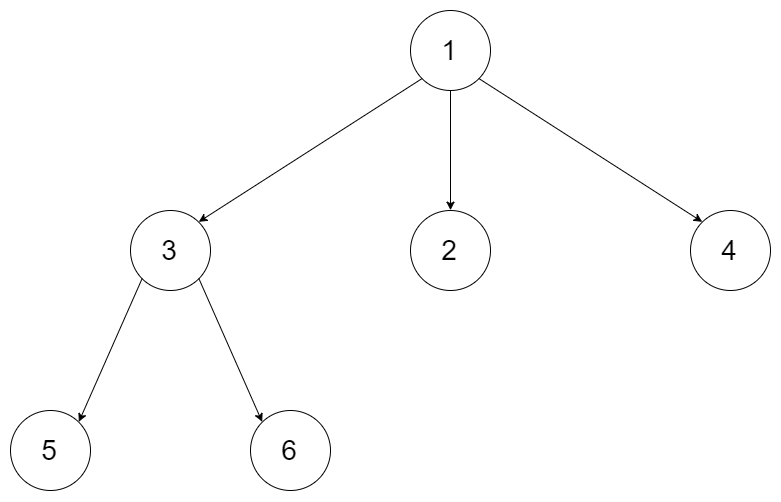给定一个二叉树,找出其最大深度。
二叉树的深度为根节点到最远叶子节点的最长路径上的节点数。
说明: 叶子节点是指没有子节点的节点。
示例: 给定二叉树 [3,9,20,null,null,15,7],

返回它的最大深度 3 。
思路
看完本篇可以一起做了如下两道题目:
#递归法
本题可以使用前序(中左右),也可以使用后序遍历(左右中),使用前序求的就是深度,使用后序求的是高度。
- 二叉树节点的深度:指从根节点到该节点的最长简单路径边的条数或者节点数(取决于深度从0开始还是从1开始)
- 二叉树节点的高度:指从该节点到叶子节点的最长简单路径边的条数或者节点数(取决于高度从0开始还是从1开始)
而根节点的高度就是二叉树的最大深度,所以本题中我们通过后序求的根节点高度来求的二叉树最大深度。
这一点其实是很多同学没有想清楚的,很多题解同样没有讲清楚。
我先用后序遍历(左右中)来计算树的高度。
- 确定递归函数的参数和返回值:参数就是传入树的根节点,返回就返回这棵树的深度,所以返回值为int类型。
代码如下:
int getdepth(TreeNode* node)
1
- 确定终止条件:如果为空节点的话,就返回0,表示高度为0。
代码如下:
if (node == NULL) return 0;
- 确定单层递归的逻辑:先求它的左子树的深度,再求右子树的深度,最后取左右深度最大的数值 再+1 (加1是因为算上当前中间节点)就是目前节点为根节点的树的深度。
代码如下:
int leftdepth = getdepth(node->left); // 左
int rightdepth = getdepth(node->right); // 右
int depth = 1 + max(leftdepth, rightdepth); // 中
return depth;
所以整体c++代码如下:
class solution {
public:
int getdepth(TreeNode* node) {
if (node == NULL) return 0;
int leftdepth = getdepth(node->left); // 左
int rightdepth = getdepth(node->right); // 右
int depth = 1 + max(leftdepth, rightdepth); // 中
return depth;
}
int maxDepth(TreeNode* root) {
return getdepth(root);
}
};
代码精简之后c++代码如下:
class solution {
public:
int maxDepth(TreeNode* root) {
if (root == null) return 0;
return 1 + max(maxDepth(root->left), maxDepth(root->right));
}
};
精简之后的代码根本看不出是哪种遍历方式,也看不出递归三部曲的步骤,所以如果对二叉树的操作还不熟练,尽量不要直接照着精简代码来学。
本题当然也可以使用前序,代码如下:(充分表现出求深度回溯的过程)
class solution {
public:
int result;
void getdepth(TreeNode* node, int depth) {
result = depth > result ? depth : result; // 中
if (node->left == NULL && node->right == NULL) return ;
if (node->left) { // 左
depth++; // 深度+1
getdepth(node->left, depth);
depth--; // 回溯,深度-1
}
if (node->right) { // 右
depth++; // 深度+1
getdepth(node->right, depth);
depth--; // 回溯,深度-1
}
return ;
}
int maxDepth(TreeNode* root) {
result = 0;
if (root == NULL) return result;
getdepth(root, 1);
return result;
}
};
可以看出使用了前序(中左右)的遍历顺序,这才是真正求深度的逻辑!
注意以上代码是为了把细节体现出来,简化一下代码如下:
class solution {
public:
int result;
void getdepth(TreeNode* node, int depth) {
result = depth > result ? depth : result; // 中
if (node->left == NULL && node->right == NULL) return ;
if (node->left) { // 左
getdepth(node->left, depth + 1);
}
if (node->right) { // 右
getdepth(node->right, depth + 1);
}
return ;
}
int maxDepth(TreeNode* root) {
result = 0;
if (root == 0) return result;
getdepth(root, 1);
return result;
}
};
#迭代法
使用迭代法的话,使用层序遍历是最为合适的,因为最大的深度就是二叉树的层数,和层序遍历的方式极其吻合。
在二叉树中,一层一层的来遍历二叉树,记录一下遍历的层数就是二叉树的深度,如图所示:

所以这道题的迭代法就是一道模板题,可以使用二叉树层序遍历的模板来解决的。
如果对层序遍历还不清楚的话,可以看这篇:二叉树:层序遍历登场!(opens new window)
c++代码如下:
class solution {
public:
int maxDepth(TreeNode* root) {
if (root == NULL) return 0;
int depth = 0;
queue<TreeNode*> que;
que.push(root);
while(!que.empty()) {
int size = que.size();
depth++; // 记录深度
for (int i = 0; i < size; i++) {
TreeNode* node = que.front();
que.pop();
if (node->left) que.push(node->left);
if (node->right) que.push(node->right);
}
}
return depth;
}
};
那么我们可以顺便解决一下n叉树的最大深度问题
#相关题目推荐
#559.n叉树的最大深度
给定一个 n 叉树,找到其最大深度。
最大深度是指从根节点到最远叶子节点的最长路径上的节点总数。
例如,给定一个 3叉树 :

我们应返回其最大深度,3。
#思路
依然可以提供递归法和迭代法,来解决这个问题,思路是和二叉树思路一样的,直接给出代码如下:
#递归法
c++代码:
class solution {
public:
int maxDepth(Node* root) {
if (root == 0) return 0;
int depth = 0;
for (int i = 0; i < root->children.size(); i++) {
depth = max (depth, maxDepth(root->children[i]));
}
return depth + 1;
}
};
#迭代法
依然是层序遍历,代码如下:
class solution {
public:
int maxDepth(Node* root) {
queue<Node*> que;
if (root != NULL) que.push(root);
int depth = 0;
while (!que.empty()) {
int size = que.size();
depth++; // 记录深度
for (int i = 0; i < size; i++) {
Node* node = que.front();
que.pop();
for (int j = 0; j < node->children.size(); j++) {
if (node->children[j]) que.push(node->children[j]);
}
}
}
return depth;
}
};原文地址:https://blog.csdn.net/weixin_47675625/article/details/135507723
本文来自互联网用户投稿,该文观点仅代表作者本人,不代表本站立场。本站仅提供信息存储空间服务,不拥有所有权,不承担相关法律责任。
如若转载,请注明出处:http://www.7code.cn/show_57274.html
如若内容造成侵权/违法违规/事实不符,请联系代码007邮箱:suwngjj01@126.com进行投诉反馈,一经查实,立即删除!






